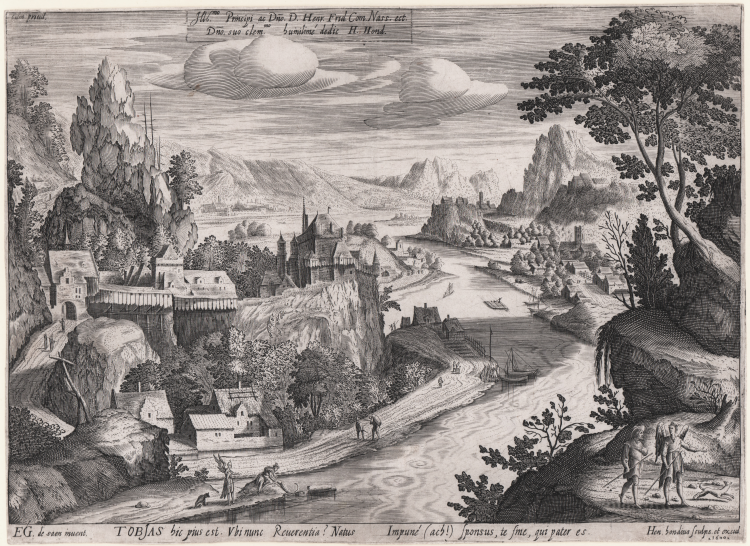



| Reference: | S10603 |
| Author | Hendrick HONDIUS |
| Year: | 1600 |
| Measures: | 280 x 205 mm |



| Reference: | S10603 |
| Author | Hendrick HONDIUS |
| Year: | 1600 |
| Measures: | 280 x 205 mm |
Engraving, 1600, signed and dated on plate on lower right.
From a subject of Gillis de Saen.
Magnificent work, printed on contemporary laid paper without watermark, trimmed to platemark and with full marginal line, in excellent condition. Rare.
|
Hollstein 4.
|
Hendrick HONDIUS (Amsterdam 1597 - 1651)
|
Son of Jodocus Hondius (1563-1612) - engraver, cartographer, printer and publisher - in 1627 he began working in the family publishing business, managed, after the death of his father, by his mother and the printer Johannes Janssonius, who in 1612 had married Hendrick's (lat. Henricus) sister, Elisabeth. The Hondius typography was one of the most important of the time, even thanks to the collection of Mercator’s plates and the pubbication of many charts and atlases. In 1604, Hondius bought the copperplates of Mercator’s Atlas at the auction of Gerard Jr.’s effects. He added another forty maps, including new maps of the Continents and important regional maps of the Americas, before publishing a new edition of the Atlas, in 1606, in competition with Ortelius’ Theatrum. As many of the maps were more up-to-date, the Mercator-Hondius Atlas effectively superseded Ortelius’ Theatrum. On his death in 1612 his widow, Coletta van den Keere continued the business; from 1619 onwards their son Henry (II) (1597-1651) took over. From 1633 publication was carried on in co-operation with Jan Jansson Jr., Henry’s brother-in-law.
|
|
Hollstein 4.
|
Hendrick HONDIUS (Amsterdam 1597 - 1651)
|
Son of Jodocus Hondius (1563-1612) - engraver, cartographer, printer and publisher - in 1627 he began working in the family publishing business, managed, after the death of his father, by his mother and the printer Johannes Janssonius, who in 1612 had married Hendrick's (lat. Henricus) sister, Elisabeth. The Hondius typography was one of the most important of the time, even thanks to the collection of Mercator’s plates and the pubbication of many charts and atlases. In 1604, Hondius bought the copperplates of Mercator’s Atlas at the auction of Gerard Jr.’s effects. He added another forty maps, including new maps of the Continents and important regional maps of the Americas, before publishing a new edition of the Atlas, in 1606, in competition with Ortelius’ Theatrum. As many of the maps were more up-to-date, the Mercator-Hondius Atlas effectively superseded Ortelius’ Theatrum. On his death in 1612 his widow, Coletta van den Keere continued the business; from 1619 onwards their son Henry (II) (1597-1651) took over. From 1633 publication was carried on in co-operation with Jan Jansson Jr., Henry’s brother-in-law.
|